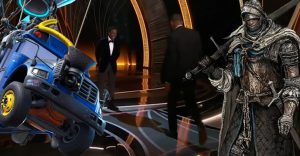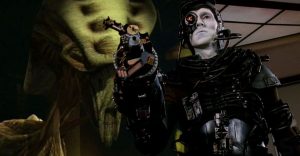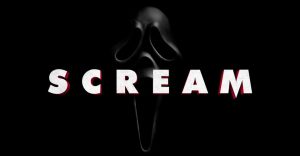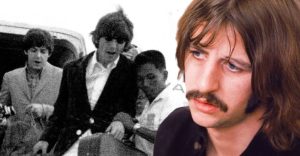MBTI® Of Spider-Man: No Way Home Characters

Spider-Man is one of the most beloved franchises in the world, and the new movie, Spider-Man: No Way Home, excels at creating a story that both longtime fans and newcomers will find themselves able to enjoy. What the movie does especially well is to create characters that the audience can cheer for and understand, who are all trying to do the best that they can.
Even the villains show that there is more to them than just evil, that there is hope for redemption. Looking at these characters through the Meyers-Briggs® system shows further shades to their personalities.
Spider-Man (Tom Holland) – ESTP

Tom Holland has shown that he is one of the best actors to have fit into the Spider-Man suit, and he is a textbook example of the ESTP type. Like most others that fit into this category, he is the type of person that wants to see immediate results to the problems that confront him, and it helps to explain why he goes to Dr. Strange in order to have everyone forget that he is Peter Parker.
At the same time, the ESTP’s signature energy is what makes Holland so charming in the role.
Spider-Man (Tobey Maguire) – ENFJ

To some, Tobey Maguire is the best Spider-Man, and this movie shows why that might be the case. He is soft and sensitive and caring, and he does everything that he can to take both of the other Spider-Mans under his wing, to show them that there is an alternative to being committed to vengeance or buried in self-recrimination and guilt.
As a result, he is very much aligned with the ENFJ type, which is well known for being very in sync with the feelings and needs of others.
Spider-Man (Andrew Garfield) – INFP

Of the three Spider-Man’s, Andrew Garfield’s iteration is the one most tormented by guilt, since he still blames himself for Gwen Stacey’s death. However, he still shows that he has the traits of the INFP, a personality type that is very much committed to their values and to doing everything that they can to make sure that the world outside of them aligns with those values.
This has always been a key character trait of Garfield’s iteration of the character, for both better and worse.
Doc Ock – ISTJ

It’s clear that Doc Ock is one of Alfred Molina’s best roles, and he once again imbues the character with richness and depth. Though he begins as a villain, when he is ultimately liberated from the pernicious influence of the tentacles, he shows all of the signs of the ISTJ, a personality type that is characterized by a sense of logicality, practicality, and being responsible.
Once he is restored to his original personality, he shows that he has these traits in abundance and becomes key to the salvation of the other villains.
Norman Osborn/Green Goblin – ENTP

The Green Goblin is one of the evilest villains that Spider-Man has ever faced, but his Norman Osborn side is much more mild-mannered and, when it comes right down to it, a decent man. Both sides show some traits associated with the ENTP personality type, particularly in their adaptability when it comes to new problems.
It’s precisely these ENTP skills that allow him to see the world that they come to as yet another place to conquer, rather than getting overwhelmed with the strangeness of it all.
Aunt May – ENFJ

Aunt May is a beloved member of the Spider-Man universe, full of compassion, empathy, wisdom, and kindness. In that sense, she fits in with the ENFJ.
Furthermore, she also demonstrates that she has this personality type’s willingness to see the good and the potential in whichever person they meet since she is the one that convinces Peter to do what he can to save the villains rather than just condemning them to certain death.
MJ – INTJ

Zendaya is another powerful actress that brings their considerable talents to her role as MJ. MJ is a self-described pessimist, but she is also fiercely loyal and willing to do everything she can to help Peter Parker in his efforts to cure the villains of their shortcomings.
It’s her skeptical and independent attitude, so key to the attributes of the INTJ, that makes her a useful counterpoint to Peter and that proves so central to the plot. Without her, Peter would be far more willing to give in to his impulsiveness.
Dr. Strange – ESTJ

The powerful Dr. Strange is one of Benedict Cumberbatch’s roles, and he shows that he is a very complicated character. While he is clearly empathetic, he also has some of the other less flexible traits that are usually associated with the ESTJ.
In particular, he has a decisiveness that can be both a blessing and a curse, for once he quickly decides that the only thing that they can do is to consign the villains to their fate, he sticks with it, even though Peter tries to convince him that they have a moral obligation to try to save them.
Ned Leeds – ESFJ

In some ways, Ned is the comic relief of the movie, but he also shows that there are hidden depths to his personality. More than anything else, he is faithful to Peter, and as a result, he very much fits into the mold of the ESFJ.
He is one of those who is willing to stay loyal to Peter, even when it would be much easier to abandon him and save his own reputation.
Happy – ISFP

Happy is another of the more endearing and likable characters to appear in this movie, and he genuinely cares for both Peter and for Aunt May. Like many other people who fit in the mold of the ISFP, he is firmly committed to the people that he cares about, and he will go to any lengths to try to keep them safe.
It’s for precisely these reasons that he is one of Peter’s most steadfast allies and is so important to his personal happiness.
About The Author

















